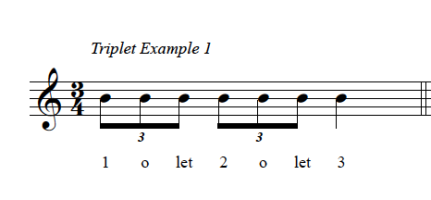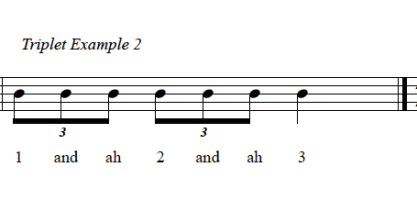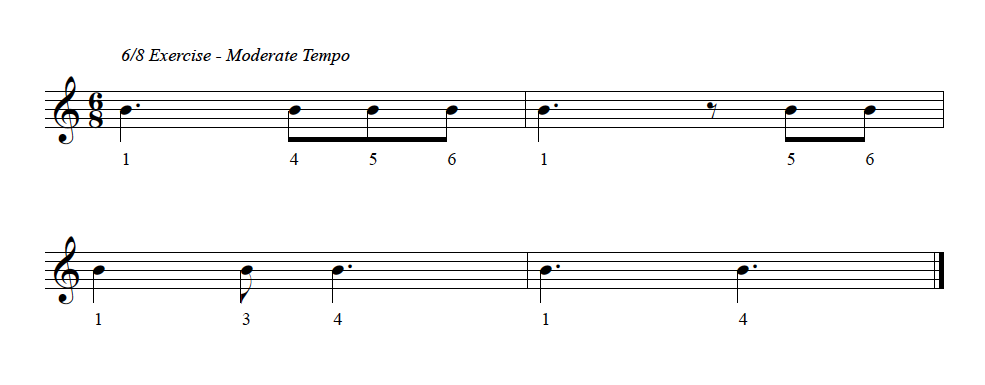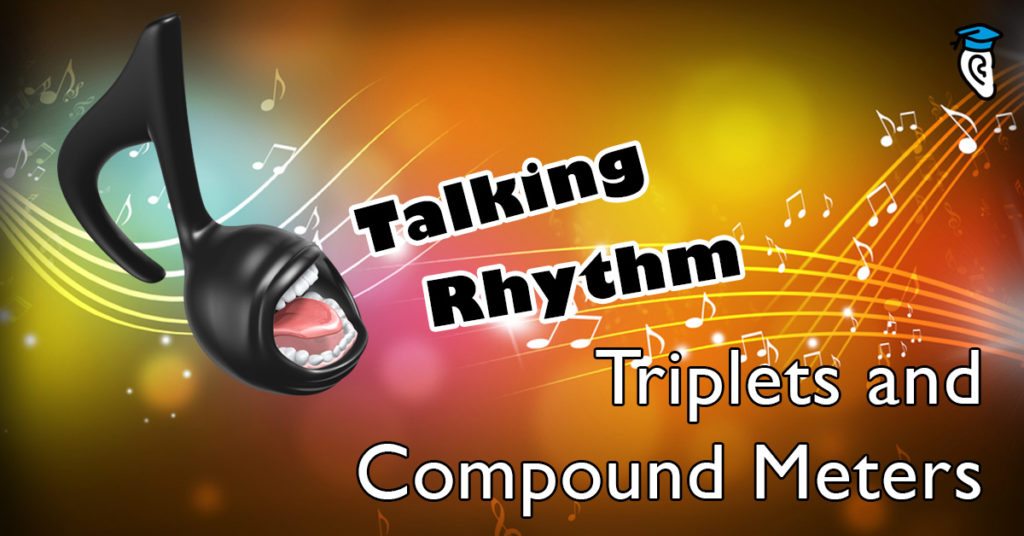In this series so far we have learned the basics of counting quarter notes, 8th notes, and 16th notes. Now let’s talk about some more complex rhythms that you might run into. Once you internalize these rhythms and practice them again and again, you will find that identifying them and writing them down will be much easier. Not only that, but your sight-reading chops will improve!
In this article we’ll cover two areas of more advanced rhythms: triplets and compound meters.
Triplets
Learning how to count triplets is not difficult. However, one of the downsides of the count chant method is that it has been developed over many years without any official formalisation. In other words, depending on a musician’s training, different musicians may count rhythms a little differently. A good example is counting the triplet out loud.
Below are two different ways to count triplets out loud. In the first example, the musician uses a variation on the word “triplet” by saying “1-o-let” for each of the triplet notes. This way of counting triplets is most likely derived from mispronouncing the word “triplet” to match the actual triplet rhythm “trip-o-let”. In fact, you can practice saying “trip-o-let-trip-o-let-trip-o-let” to hear how this counting method developed.

In the second example, the musician says “1-and-ah” for triplet rhythms. This method is often used more often for faster complex rhythms. Saying “4-o-let” at presto can become a mouthful!

While both methods are being introduced here, for simplicity’s sake, the examples that follow will use the “1-o-let” method to help distinguish a triplet from a 16th note pattern (which you’ll remember is counted “1-ee-and-ah”).
Exercise: Practicing Triplet Patterns
Using what you have learned, practice the triplet patterns below. Listen to the audio examples several times to familiarize yourself with the patterns.
- Practice counting with the recorded examples below
- Practice tapping your foot as you count the rhythm
- Without a metronome, try to count out the patterns at different tempos
- Set your metronome to various tempos – moderate, slow, fast, very fast
- Practice counting these patterns with your metronome


Compound Meter
Not all music is written in simple meters like 2/4 or 4/4. While most of the music you hear in the radio does not stray from these easy meters, you will find that as you grow as a musician, your knowledge of compound meters will grow, and you will need to count these rhythms aloud to learn them.
The most common compound meter that you will encounter in Western music is 6/8. There are many, many more complex meters like 7/8 or 5/16 that you might encounter, but 6/8 is found most often in styles like pop, jazz, classical, and rock.
In 6/8 the 8th note gets the beat and there are six 8th notes per measure. You will count 6/8 rhythm like this:

At faster tempos, you will count a 6/8 time signature like this:
You can apply this counting method to similar meters like 9/8 and 12/8. Below are examples for both slow and fast tempos with different time signatures.


When you encounter a rest in a compound meter, you will count the “missing” or long notes in your head. Often compound meters move very quickly, and you may find that it is easier to memorize the rhythms instead of trying to count them in your head.
Exercise: Counting Compound Meters
Listen carefully to the audio examples several times before beginning the exercise. Try to internalize the beat. If you can, tap your foot on the beat. You may find it easier to memorize these rhythms once you are comfortable with them, especially for faster tempos.
- Practice counting with the example
- Set your metronome to a moderate tempo
- Practice counting the example aloud without the audio
- Set your metronome to a faster tempo
- Practice counting to a faster tempo
- Once you are comfortable with this rhythm, try the exercise while tapping your foot on the beat

Now you have learned how to count triplet patterns and compound meters like 6/8. For more advanced practice on your own, take these examples and try to improvise on your instrument or with your voice. Or make it fun and invite a friend to check out your new rhythm skills!
In the next article in the series we’ll start looking at the alternative way to talk out rhythms, the Kodály method. Stay tuned!








